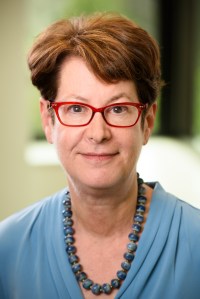
The Census Bureau last week released a new estimate of the number of U.S. same-sex married couples: 252,000. The data show a sharp increase, but come with a caveat because agency officials acknowledge the estimates are flawed and say they are still working to improve their accuracy.
The 2013 total is 38% higher than the bureau’s 2012 estimate of 182,000 same-sex married couples; both come from the American Community Survey. Accounting for a significant part of the increase, according to a bureau official, was a change in how the agency reported data from survey forms with incomplete responses.
This year’s census data counted same-sex spouses along with all other married couples for the first time, reflecting widening legal and social acceptance of gay marriage. Same sex marriage is now legal in 19 states and the District of Columbia, and U.S. public opinion has shifted from majority-opposition to majority-support in recent years.
There is great public interest in tracking the growth and impact of same-sex marriage, but the Census Bureau has struggled to keep up with the pace of social change. Its own research has found that potentially half of couples whose survey forms say they are same-sex spouses likely are opposite-sex spouses. The major reason for this is that one partner in some opposite-sex couples mistakenly checks the wrong sex box on the questionnaire. Even if this does not happen often, a few errors can have a large impact in inflating the size of a group that is relatively small compared with the nation’s 56 million opposite-sex married couples.
The bureau has experimented with, but not yet implemented, new ways of asking questions to reduce the error rate. Meanwhile, “we know there is significant error in the estimate,” said Rose Kreider, chief of the bureau’s fertility and family statistics branch.
Most of the growth in the number of same-sex spouses from 2012 to 2013 is because more people said they were same-sex spouses on the survey questionnaire, Kreider said. But there also was a “significant” impact, she said, from a change in the way the bureau edited responses from some people whose questionnaires had missing information.
In most cases, the missing information was people’s gender, because they did not check the “male” or “female” box on the survey form. On forms where gender was missing, bureau analysts looked at the person’s first name, then used a list of first names, categorized by sex, to assign a gender. This had the effect of adding to the number of same-sex spouses, she said.
While the bureau studies how to raise the accuracy of its data, demographers, reporters, researchers and others who need this information are left in a quandary about whether to use it. Census numbers traditionally are the premier source of national, state and local demographic information, and there are not many alternatives.
One of the nation’s experts on such data, demographer Gary Gates of the Williams Institute at University of California Los Angeles Law School, said he hopes the bureau’s research will find ways to improve its questions on the American Community Survey so as to minimize error and improve the accuracy and validity of its data.
“Until those changes are fully implemented,” he said, “I remain skeptical that existing estimates of same-sex married couples derived from the [bureau’s survey] can provide much meaningful information about the number or characteristics of same-sex married couples in the U.S.”



